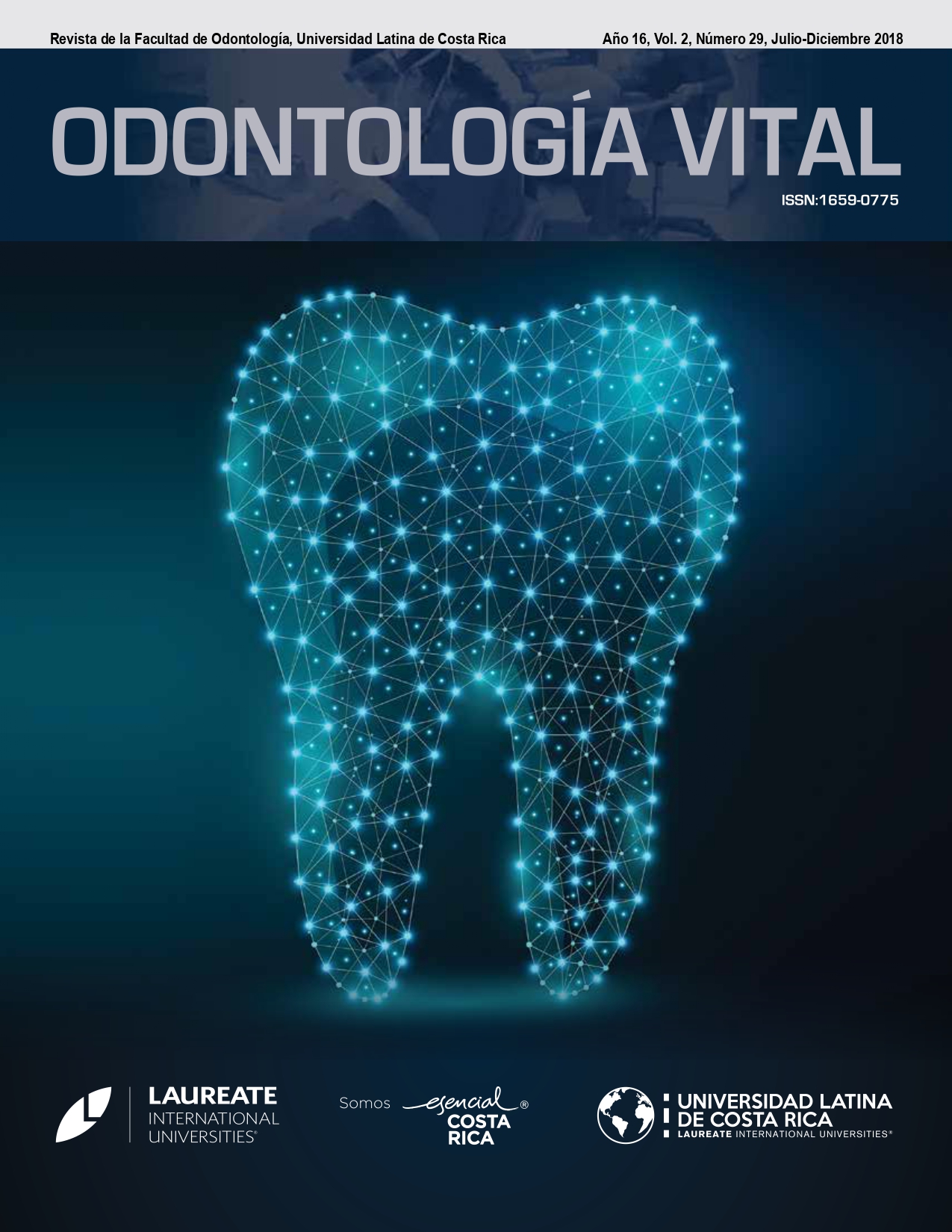Management of the patient with severe crowding and bilateral posterior cross bite with maxillaryexpander type Hyrax
DOI:
https://doi.org/10.59334/ROV.v2i29.149Keywords:
Skeletal class II, severe crowding, maxillary expansionAbstract
Causes of transverse discrepancies of the maxilla can be genetic or environmental. We present a patient of 17 years 7 months of age. In his clinical and radiographic analysis he was diagnosed as: Skeletal Class I, hyperdivergent, malocclusion class II bilateral molar and canine, bilateral posterior cross bite, severe upper and lower crowding, crossed dental organ. The treatment consisted of maxillary expansion and alignment, opening of space for 22, leveling, detailing and retention. The appliances used were brackets prescription Roth .022 x .028, maxillary expander type Hyrax, molar bands in the upper molars 6s, tubes in 6’s and 7’s upper and lower, open coil of Niti. The retention in charge of upper and lower circumferential retainer and a bonded retainer from 13- 23 and 33-43, time of active treatment 1 year 11 months.
Downloads
Downloads
Published
How to Cite
Issue
Section
License
Copyright (c) 2018 Stefanny Espinosa Holguín, Beatriz Gurrola Martínez, Adán Casasa Araujo

This work is licensed under a Creative Commons Attribution 4.0 International License.
Authors who publish with Odontología Vital agree to the following terms:
- Authors retain the copyright and grant Universidad Latina de Costa Rica the right of first publication, with the work simultaneously licensed under a Creative Commons Attribution 4.0 International license (CC BY 4.0) that allows others to share the work with an acknowledgement of the work's authorship and initial publication in this journal.
- Authors are able to enter into separate, additional contractual arrangements for the non-exclusive distribution of the Odontología Vital's published version of the work (e.g., post it to an institutional repository or publish it in a book), with an acknowledgement of its initial publication.
- Authors are permitted and encouraged to post their work online (e.g., in institutional repositories or on their website) prior to and during the submission process, as it can lead to productive exchanges, as well as earlier and greater citation of published work.
Métricas alternativas











